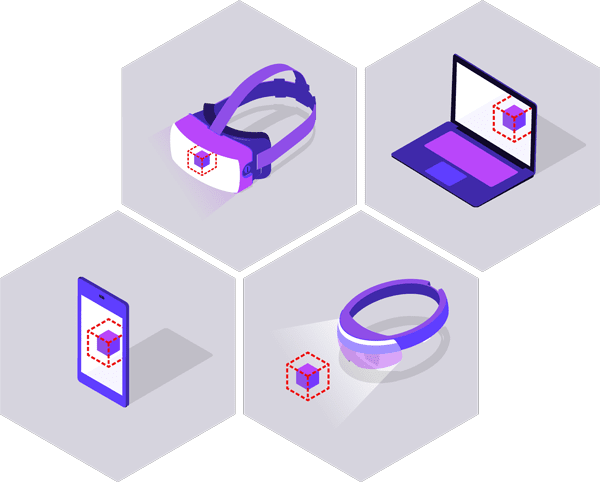Key Takeaways
Workplace L&D Challenges
Successful organisations all have one key thing in common; highly competent and productive employees. Employee training must be taken seriously if individuals, teams and organisations are to grow and thrive. But that can be easier said than done! Employee training is a complex challenge; meaning that learning and development professionals must be ahead of the game when identifying not only current skills needs, but those of the future. Developing comprehensive and engaging employee training programmes is the key to addressing the challenges of supporting a diverse workforce to rise to their potential.
Common Challenges Associated With Employee Training
1) Remote working
As we become better connected digitally, the world of work is becoming less dependent on geographical location – with team members increasingly working in multiple locations around the globe. Over the past two years, the trend towards remote working has accelerated in response to the issues the Covid pandemic brought. And although this brings tangible benefits, this also brings challenges when it comes to organising training for employees.
Traditionally, training would require bringing employees together at a specific time and in the same space to learn together. Remote working practices make this tricky logistically and as Covid is still a daily reality, meaning L&D teams are still challenged with protecting employees health, risking potentially costly last minute cancellation fees if individuals have to self isolate. What’s more, it’s also potentially expensive to get team members to one particular place and a specific time (not to mention the environmental impacts of travelling long distances) – meaning that many businesses are increasingly reliant on digital and online courses to replace classroom based experiences.
2) Scheduling courses
Whether undertaking an online course or attending training in person, signing up for a training generally means your employee will have to take time out of their working day. Moreover, it may involve factoring in travel time and overnight stays. When courses involve multiple employees attending, scheduling in a date that works for all can be logistically complex.
For some jobs, scheduling in training also requires the employee’s role to be covered by colleagues for the duration of the training session. This can lead to complex juggling of timetables and diaries to ensure that training doesn’t impact negatively on the workplace.
3) Diverse learning styles and speed
We all learn differently, so developing and delivering courses to meet the needs of all employees can be challenging. This can manifest itself in various ways, such as having to practical address issues arising from varied existing skills levels and ability to use tech, as well as incorporating the four core learning styles include visual, auditory, reading and writing, and kinesthetic.
Practice can also make perfect for many learners. Having the time and opportunity to hone skills post-event by giving easy access to practical course content and comprehensive course notes can facilitate post-course learning and boost skills retention.
4) Getting hands on
For many employees, practice based training is the most effective for the development and retention of skills. Classroom based learning cannot truly replicate the experience of learning on the job, especially for highly skilled and intricate procedures (such as surgery training) or process driven tasks undertaken in potentially dangerous environments. In these circumstances there is a training paradox; where practice is needed to perfect techniques, but on-the-job training is too high risk – and potentially deadly. In such circumstances, practice based, simulated training can offer an impactful way to develop the required skills, however this can come at a high cost to businesses, especially when creating bespoke courses tailored to individual needs.
5) Keeping learners engaged
For training to be truly impactful, learners need to stay engaged. Simply talking at learners for hours on end doesn’t cut it. Passive learning can lead to the learner feeling bored and distracted during the training experience – and what’s more, it’s ineffective for retaining knowledge after the course has been completed. Whether you’re developing an in-person course or an online learning experience, there are key ways that this can be addressed – from keeping modules short and punchy, adding regular periods of interactivity, from simple questions to learners through to quizzes, exercises and role playing.
6) Relevance to individual employees needs
Introducing generic training courses may seem like a good idea, but if a learner can’t see the direct benefit and relevance to their work, they will rapidly lose interest, disengaging with the course and getting distracted throughout the experience. What’s more, it may mean that employees may also resist future training interventions by thinking that training is a waste of their time.
7) Training costs
Although there are great sources of free and low cost online training options, these courses alone are unlikely to fully meet your organisation’s skills needs. For a truly impactful and effective learning and development programme, investment in training will be required – and there are numerous hidden costs that need to be considered when developing and delivering .
This can include obvious costs, such development costs, trainer delivery fees, equipment and venue costs, or paying course fees for off the shelf courses. Moreover costs such as travel, accommodation and employee downtime also need to be considered. Adding all this up, training can be an expensive undertaking – and the ideal training programmes may put a significant strain on stretched learning and development budgets.
8) Proving a good return on investment
As with any business decision that has cost and time implications, proving value is crucial – especially when considering that training can be expensive – and may potentially initially rely on a leap of faith by your organisation’s C-level team. Developing an evidence-based, compelling business case that is aligned to your organisation’s long term strategy that demonstrates the tangible impact investment in training will have is essential. Reporting back on success is also an important step in producing an achievable long term L&D programme. By doing all this, your senior management team will be able to understand and support your vision by recognising its long term impact on the bottom line.
9) Evaluation and measuring effectiveness
Gaining tangible insights into the effectiveness of any training intervention is a crucial part of any learning and development programme. Measuring effectiveness can be complex and can include monitoring performance during a training session, collecting post-course learner feedback to gauge the immediate reactions, through to the longer term tracking learned skills being applied in the workplace, as well as assessing whether the course has met individual and organisational objectives. These measurements can also play an essential part in refining course content for future sessions and supporting L&D teams in providing tangible evidence for the return on investment.
How VR Can Solve Employee Training Challenges
The world of work is evolving and ensuring employees have the skills required to rise to the challenges that change brings is crucial. To do this effectively, training techniques need to evolve. And that’s where VR technology comes into its own.
Virtual reality (VR) and training are a match made in heaven. VR platforms such as VISIONxR can provide a distraction-free space for employees to learn together. Bespoke learning environments can be created to replicate workplaces and teams can be transported into the same space, regardless of their geographical location. Learners can benefit from practice based activities and facilitate interdependent learning, as well as the possibility of honing their individual skills with the opportunity to re-visit training exercises and practice over a period of time. Moreover, performance can be monitored and assessed throughout the experience, making it a great way to measure effectiveness for the individual and organisation alike.
Over the past few years, VR technology has become increasingly accessible and the cost of hardware more affordable. Advances in software means the virtual space is more realistic and responsive – and the rollout of 5G also means VR is increasingly reliable in connecting teams and shared immersive experiences. This makes virtual reality a viable alternative to online and classroom learning. Virtual reality and training are truly a match made in heaven – and it’s potentially the future of learning for tomorrow that’s accessible today.
Key Takeaways
Workplace L&D Challenges
Successful organisations all have one key thing in common; highly competent and productive employees. Employee training must be taken seriously if individuals, teams and organisations are to grow and thrive. But that can be easier said than done! Employee training is a complex challenge; meaning that learning and development professionals must be ahead of the game when identifying not only current skills needs, but those of the future. Developing comprehensive and engaging employee training programmes is the key to addressing the challenges of supporting a diverse workforce to rise to their potential.
Common Challenges Associated With Employee Training
1) Remote working
As we become better connected digitally, the world of work is becoming less dependent on geographical location – with team members increasingly working in multiple locations around the globe. Over the past two years, the trend towards remote working has accelerated in response to the issues the Covid pandemic brought. And although this brings tangible benefits, this also brings challenges when it comes to organising training for employees.
Traditionally, training would require bringing employees together at a specific time and in the same space to learn together. Remote working practices make this tricky logistically and as Covid is still a daily reality, meaning L&D teams are still challenged with protecting employees health, risking potentially costly last minute cancellation fees if individuals have to self isolate. What’s more, it’s also potentially expensive to get team members to one particular place and a specific time (not to mention the environmental impacts of travelling long distances) – meaning that many businesses are increasingly reliant on digital and online courses to replace classroom based experiences.
2) Scheduling courses
Whether undertaking an online course or attending training in person, signing up for a training generally means your employee will have to take time out of their working day. Moreover, it may involve factoring in travel time and overnight stays. When courses involve multiple employees attending, scheduling in a date that works for all can be logistically complex.
For some jobs, scheduling in training also requires the employee’s role to be covered by colleagues for the duration of the training session. This can lead to complex juggling of timetables and diaries to ensure that training doesn’t impact negatively on the workplace.
3) Diverse learning styles and speed
We all learn differently, so developing and delivering courses to meet the needs of all employees can be challenging. This can manifest itself in various ways, such as having to practical address issues arising from varied existing skills levels and ability to use tech, as well as incorporating the four core learning styles include visual, auditory, reading and writing, and kinesthetic.
Practice can also make perfect for many learners. Having the time and opportunity to hone skills post-event by giving easy access to practical course content and comprehensive course notes can facilitate post-course learning and boost skills retention.
4) Getting hands on
For many employees, practice based training is the most effective for the development and retention of skills. Classroom based learning cannot truly replicate the experience of learning on the job, especially for highly skilled and intricate procedures (such as surgery training) or process driven tasks undertaken in potentially dangerous environments. In these circumstances there is a training paradox; where practice is needed to perfect techniques, but on-the-job training is too high risk – and potentially deadly. In such circumstances, practice based, simulated training can offer an impactful way to develop the required skills, however this can come at a high cost to businesses, especially when creating bespoke courses tailored to individual needs.
5) Keeping learners engaged
For training to be truly impactful, learners need to stay engaged. Simply talking at learners for hours on end doesn’t cut it. Passive learning can lead to the learner feeling bored and distracted during the training experience – and what’s more, it’s ineffective for retaining knowledge after the course has been completed. Whether you’re developing an in-person course or an online learning experience, there are key ways that this can be addressed – from keeping modules short and punchy, adding regular periods of interactivity, from simple questions to learners through to quizzes, exercises and role playing.
6) Relevance to individual employees needs
Introducing generic training courses may seem like a good idea, but if a learner can’t see the direct benefit and relevance to their work, they will rapidly lose interest, disengaging with the course and getting distracted throughout the experience. What’s more, it may mean that employees may also resist future training interventions by thinking that training is a waste of their time.
7) Training costs
Although there are great sources of free and low cost online training options, these courses alone are unlikely to fully meet your organisation’s skills needs. For a truly impactful and effective learning and development programme, investment in training will be required – and there are numerous hidden costs that need to be considered when developing and delivering .
This can include obvious costs, such development costs, trainer delivery fees, equipment and venue costs, or paying course fees for off the shelf courses. Moreover costs such as travel, accommodation and employee downtime also need to be considered. Adding all this up, training can be an expensive undertaking – and the ideal training programmes may put a significant strain on stretched learning and development budgets.
8) Proving a good return on investment
As with any business decision that has cost and time implications, proving value is crucial – especially when considering that training can be expensive – and may potentially initially rely on a leap of faith by your organisation’s C-level team. Developing an evidence-based, compelling business case that is aligned to your organisation’s long term strategy that demonstrates the tangible impact investment in training will have is essential. Reporting back on success is also an important step in producing an achievable long term L&D programme. By doing all this, your senior management team will be able to understand and support your vision by recognising its long term impact on the bottom line.
9) Evaluation and measuring effectiveness
Gaining tangible insights into the effectiveness of any training intervention is a crucial part of any learning and development programme. Measuring effectiveness can be complex and can include monitoring performance during a training session, collecting post-course learner feedback to gauge the immediate reactions, through to the longer term tracking learned skills being applied in the workplace, as well as assessing whether the course has met individual and organisational objectives. These measurements can also play an essential part in refining course content for future sessions and supporting L&D teams in providing tangible evidence for the return on investment.
How VR Can Solve Employee Training Challenges
The world of work is evolving and ensuring employees have the skills required to rise to the challenges that change brings is crucial. To do this effectively, training techniques need to evolve. And that’s where VR technology comes into its own.
Virtual reality (VR) and training are a match made in heaven. VR platforms such as VISIONxR can provide a distraction-free space for employees to learn together. Bespoke learning environments can be created to replicate workplaces and teams can be transported into the same space, regardless of their geographical location. Learners can benefit from practice based activities and facilitate interdependent learning, as well as the possibility of honing their individual skills with the opportunity to re-visit training exercises and practice over a period of time. Moreover, performance can be monitored and assessed throughout the experience, making it a great way to measure effectiveness for the individual and organisation alike.
Over the past few years, VR technology has become increasingly accessible and the cost of hardware more affordable. Advances in software means the virtual space is more realistic and responsive – and the rollout of 5G also means VR is increasingly reliable in connecting teams and shared immersive experiences. This makes virtual reality a viable alternative to online and classroom learning. Virtual reality and training are truly a match made in heaven – and it’s potentially the future of learning for tomorrow that’s accessible today.































